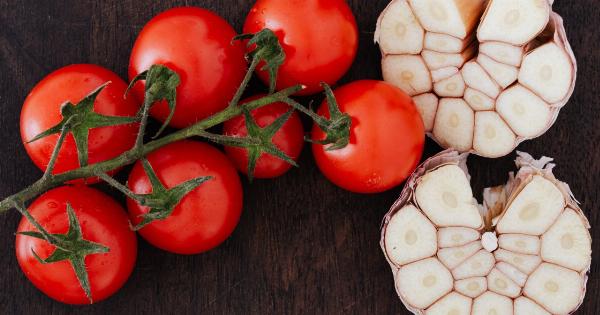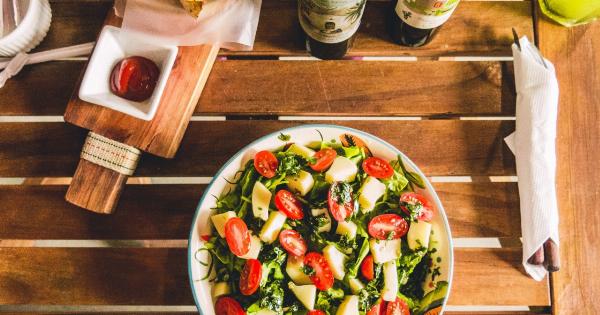Pasta is a beloved dish for many people around the world. Its comforting and versatile nature makes it a staple in countless households. However, pasta can also be high in calories, which can be a concern for those trying to maintain a healthy diet.
The good news is that there are several simple and effective ways to make your pasta healthier without compromising on taste. By making a few modifications to your cooking and ingredient choices, you can cut the calories in half and still enjoy a delicious bowl of pasta.
Choose Whole Wheat Pasta
When it comes to pasta, the type of grain used plays a significant role in its nutritional value. Opting for whole wheat pasta instead of refined white pasta is an excellent choice for making your pasta healthier.
Whole wheat pasta is higher in fiber and nutrients, making it more filling and nutritious. Additionally, whole wheat pasta has a lower glycemic index, which means it causes a slower and steadier rise in blood sugar levels compared to refined pasta. This can help keep you feeling full for longer and prevent energy crashes.
Mind Your Portions
Portion control is crucial when it comes to any dish, including pasta. Even if you choose whole wheat pasta, eating large portions can lead to an excess intake of calories. To make your pasta healthier, make sure to measure your portions accurately.
A typical serving size of pasta is around one cup, but it’s best to consult the package instructions for specific measurements. By being mindful of your portions, you can enjoy your pasta guilt-free and prevent overeating.
Add Vegetables
Boost the nutritional value of your pasta by adding an abundance of vegetables. Vegetables are low in calories and high in essential vitamins and minerals. They also provide fiber, which aids digestion and helps you feel satisfied.
There are countless vegetable options that pair well with pasta, such as broccoli, spinach, bell peppers, zucchini, and cherry tomatoes. Sautee or roast the vegetables before mixing them into your pasta for added flavor, or toss in some raw veggies for a refreshing crunch.
Reduce the Cheese
Cheese is a common ingredient in many pasta dishes, but it can contribute a significant amount of additional calories. Instead of completely eliminating cheese, consider reducing the amount you use.
Opt for a flavorful, aged cheese like Parmesan or Romano, which allows you to use less while still imparting a rich taste. Alternatively, you can try using a small amount of low-fat or part-skim cheese to cut down on calories without sacrificing flavor.
Additionally, experiment with using nutritional yeast as a vegan alternative for a cheesy taste without the added calories.
Choose Lean Proteins
Adding lean proteins to your pasta dish is another effective way to make it healthier. Protein helps keep you feeling full and satisfied, which can prevent overeating.
Instead of heavy, calorie-laden meat sauces or processed meats, opt for lean protein sources. Grilled chicken, turkey, lean ground beef or turkey, shrimp, or tofu are all excellent options. Cook your protein separately and add it to your pasta dish for a boost of nutrition without unnecessary calories.
Use Olive Oil Sparingly
Olive oil can add a wonderful flavor and richness to pasta dishes. However, it’s important to use it sparingly to avoid excessive calories. Instead of drowning your pasta in sauce or oil, try lightly coating it.
When sautéing vegetables or garlic for your pasta, use a small amount of olive oil or consider using cooking spray as a healthier alternative. This way, you can still enjoy the taste of olive oil without consuming unnecessary calories.
Steer Clear of Creamy Sauces
Cream-based sauces can quickly turn a healthy pasta dish into a calorie-dense one. To make your pasta healthier, opt for lighter sauce alternatives. Tomato-based sauces, such as marinara or arrabbiata, are lower in calories and offer a burst of flavor.
Alternatively, you can make your sauce from scratch using fresh tomatoes or vegetables. Experiment with herbs and spices to create rich and flavorful sauces that are low in calories.
Cook al dente
When cooking pasta, aim for an “al dente” texture. This means the pasta should be firm to the bite and not overly soft or mushy. Cooking pasta al dente can help lower its glycemic index, which can prevent blood sugar spikes and crashes.
Al dente pasta also takes longer to chew, which can help you feel more satisfied with smaller portions. Follow the package instructions for cooking time, but start tasting the pasta a couple of minutes before the recommended time to ensure ideal doneness.
Cut Down on Added Salt
Many pasta dishes can be high in sodium due to the use of salt and processed sauces. To make your pasta healthier, be mindful of the amount of salt you add.
Instead of relying solely on salt for flavor, experiment with different herbs, spices, and aromatics. Fresh herbs like basil, parsley, or oregano can add a burst of flavor without adding unnecessary sodium. For added depth, try roasting garlic or using lemon zest to enhance the taste of your pasta dish.
Enjoy Pasta as Part of Balanced Meals
Lastly, remember that pasta can be part of a healthy and balanced meal when paired with other nutritious foods. Plan your meals to include a variety of vegetables, lean proteins, healthy fats, and whole grains.
Consider using pasta as a side dish or mixing it with a variety of colorful ingredients to create a more substantial and nutrient-rich meal. By incorporating a wide range of healthy foods into your pasta dishes, you can enjoy a satisfying and well-rounded meal that cuts the calories in half.





























